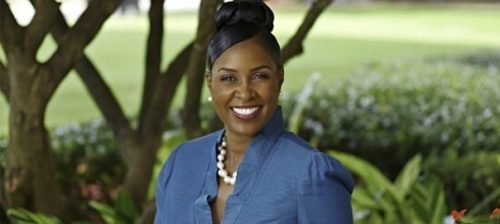One woman’s fight to end breast cancer
Andrea Ivory, married with a daughter, enjoyed a successful real estate career in Miami when she was diagnosed with breast cancer in 2004.
No one in her family had ever faced the disease—the most common cancer in women and the most likely to kill black women. Throughout her treatment and recovery, Ivory vowed to wage a battle against breast cancer beyond her own survival.
“I was on a quest for a purpose in life when I was diagnosed. I felt I was saved to serve,” Ivory says. She knew she was lucky; she had health insurance and access to good doctors.
What, Ivory wondered, about the women who didn’t?
Studies have shown that early detection and prevention strategies, such as annual mammograms, help reduce the number of deaths caused by breast cancer. Yet, in a 2010 study, only two-thirds of women over age 40 living in Broward and Miami–Dade counties reported receiving a mammogram within the past year. How could underserved, at-risk women in South Florida communities get access to prevention strategies and early detection?
One day it became clear how Ivory could make a difference: She would use her real estate skills to identify underserved neighborhoods with a socioeconomic status that made them least likely to have access to health care. She would then deliver breast cancer awareness literature to homes in those targeted neighborhoods and bring low- or no-cost mammograms to the women living there.
Ivory established the Women’s Breast Health Initiative in November 2005. Five months later, she enlisted 20 friends to join her in going door to door in underserved Miami neighborhoods, delivering educational literature on breast cancer and completing surveys to identify at-risk women who needed mammograms.
“We did not write the early-detection guidelines, but we were the heralds,” she says.
Ivory’s tenacity convinced multiple medical partners to provide clinicians for screenings and treatments via mobile mammography vans. That’s when everything fell into place. “The concept was not the norm, but people were excited that I was thinking outside the box.”
By 2010, there were 4,000 Women’s Breast Health Initiative volunteers knocking on 10,000 doors each year to help women learn about breast cancer and take advantage of mobile mammography in their neighborhoods. The following year, Ivory was named a Robert Wood Johnson Foundation Community Health Leader in recognition of her innovative community work.
“Community Health Leaders are characterized by three specific traits—they are courageous, they are creative, and they are committed,” says Janice Ford Griffin, who served as director until the program ended in 2014. Ivory says the $125,000 prize seeded the next part of her vision: replicating the program nationally.
Ivory hired an independent third-party researcher to lead a two-year review, which concluded that that the program’s unique focus on underserved women through volunteer outreach and screening made it worth replicating. According to the evaluators, one of the most valuable outcomes of the program is that approximately 60 percent of the participants, as well as a majority of the volunteers, said they had shared what they’d learned with family, friends and co-workers—significantly increasing WBHI’s reach and potential sustainability.
As of May 2015, Ivory’s vision has blossomed into more than 8,000 trained, multilingual volunteers who have visited more than 79,500 homes in 12 Florida cities. And the numbers continue to grow.
“We are empowering women, one knock at a time,” Ivory says. “It is so exciting—the most exciting thing I’ve ever done.”






